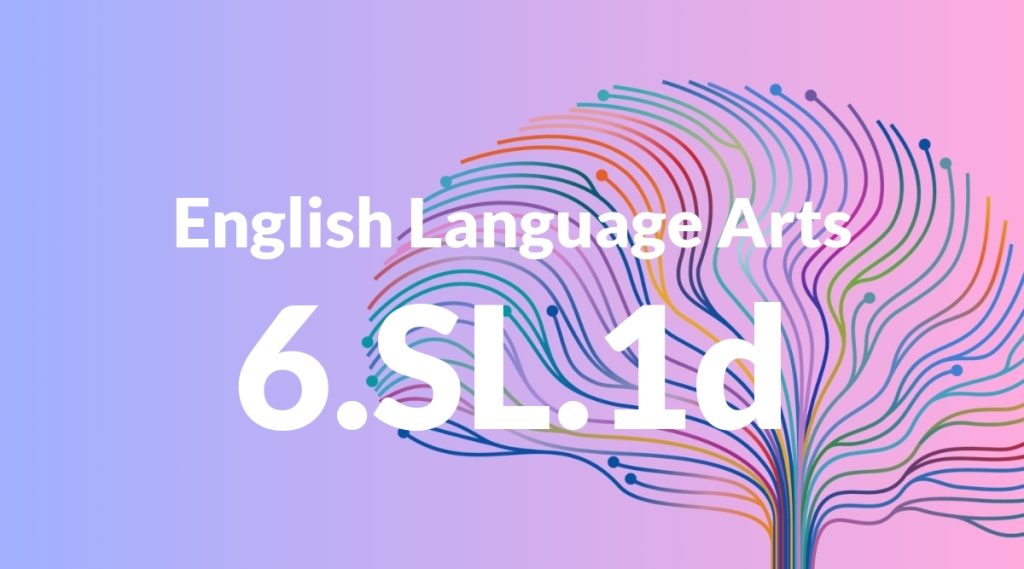Standard: 6.SL.1d – Review the key ideas expressed and demonstrate understanding of multiple perspectives through reflection and paraphrasing.
Grade level: Grade 6
Subject: English Language Arts
Domain: Speaking & Listening
Teacher Overview
This standard emphasizes the importance of students being able to review key ideas and demonstrate understanding of multiple perspectives through reflection and paraphrasing. It’s crucial for developing critical thinking and communication skills. Students should have basic listening and summarizing skills, and be able to identify main ideas in a conversation or text.
Mastering this standard will prepare students to engage in more complex discussions and debates, enhancing their critical thinking and communication skills.
Common Misconception 1
A common misconception is that paraphrasing is simply about changing words. This is incorrect because paraphrasing requires understanding and reinterpreting the original message.
Intervention 1
Use exercises that require students to explain the meaning of a passage in their own words and discuss how it differs from the original wording.
Common Misconception 2
Another misconception is that understanding multiple perspectives means agreeing with all of them. This is incorrect because understanding does not equate to agreement.
Intervention 2
Engage students in activities where they analyze and discuss different viewpoints, emphasizing the distinction between understanding and agreement.
Prerequisite Knowledge
Students should be familiar with basic listening skills, note-taking, and the ability to summarize main ideas from a text or conversation.
Subsequent Knowledge
Students will develop advanced critical thinking skills, improve their ability to engage in complex discussions, and enhance their ability to synthesize diverse viewpoints into coherent arguments.
Instructional Activities
- Role-playing different perspectives in a debate
- Creating summaries of peer presentations
- Reflective writing on group discussions
- Peer review and feedback sessions
- Listening to and discussing diverse viewpoints from multimedia sources




